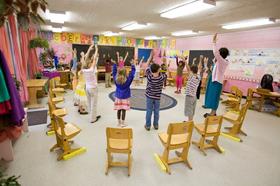A decade ago, you spent a fortune on a gorgeous catalog and a couple of recruiting trips. Then you waited. You would be in good shape if you had gotten your catalogs into the right hands and had a good turnout for your recruiting trips. The applications came in hopefully in a three-to-one ratio. All was well.
That approach doesn't work very well today. Your demographics have changed. More and more of your target parents are Generation Y. They get their information from social media.
The diversity goals your school has require different approaches, too. You need to extend the reach of your advertising campaigns by using social media, which is easily shared. Your market has become more segmented and much more competitive. As the economic outlook makes the future look more and more uncertain, parents are examining the educational foundations that their children will need to be successful in their adult lives.
The uncertain economy, which has dogged us since the 2008 recession, causes financial concerns for both you and your school and your current and prospective families.
That's where social media comes in. Done well, social media will improve your admissions yield. Done consistently, social media can cement value in place in the minds of your target audience.
But remember: social media is still marketing. It requires planning and execution of that marketing plan to work. It cannot be a hit-or-miss approach. Neither can you leave your marketing in the hands of well-intentioned amateurs. Each social media component must be used effectively to help you achieve your marketing campaign goals.
Here are some ideas for you to consider as you develop your marketing plan using Facebook, Pinterest, and YouTube.
For recruiting
Social media is all about convincing your fan base to promote the school with their friends. You want to have the 500 friends of your school sharing photos and stories about your school with their friends, who in turn share them with their friends. You have heard the expression 'going viral'. That's when a story, photo, or video gets shared rapidly everywhere. Most of the time, that applies to a major event such as a disaster. But it can work positively for marketing your school, too. And, as you probably have discovered, your Generation Y audience will believe what their friends tell me more than they will trust other sources of information.
This sharing and viral marketing approach can also work to your advantage in a school situation. The trick is trying to figure out what your fan base really likes. What pushes their buttons? What resonates with them? Let's look at a couple of things schools do all the time which will get your school talked about positively and drive traffic to your social media sites and, ultimately, your website.
Using photos to sell your school
Schools have plenty of events to choose from because something is always happening during the academic year. The secret to using events as part of your marketing strategy is to get great photos of them. The secret to great photos is to have a photographer with a keen eye. Interestingly enough, a photographer with a keen eye is often a student. Encourage your students to snap those great shots, which will elicit a "Wow!" or "What a wonderful idea!" when you post them on Facebook.
Shots of your equestrian, swimming, skiing, and squash programs can convey excitement and display the breadth and depth of your athletics department offerings. Many parents don't realize that sports are integral to a private school education. It's not just a frill easily cut when budgets get tight. The minute your prospective parents think, "I want my child to be part of that!" your marketing program has done its job.
I follow hundreds of schools for Private School Review on Facebook. I try to share a post or two daily. Action shots, photos of interaction between teachers and students, students and other cultures, and commemorative occasions grab my attention. Why? Because they tell a story. "A picture is worth a thousand words.' Make your pictures tell your school's story effectively and convincingly.
Facebook lets you create photo albums—lots of them. Choose your photos carefully. Try to create albums that have a theme. A jumble of photos is confusing and blurs your message. Use your old grade 7 journalism essay writing strategy of asking, Who? What? Where? When? Why? questions to develop really good photo albums on Facebook.
Who? Who is in the photos? Label them.
What? What is your audience looking at? Don't assume people know what the photos are about.
Where? Where were the photos taken? Let everybody visualize the setting.
When? When were the photos taken? The date stamp adds relevance to your message if it is recent. It has historical value if older. Alums love to look through a window to their school days. Older photos can trigger a flood of happy memories and hopefully some grateful donations to your capital campaign and annual fund.
Why? Why were the photos taken? Commemorative albums and virtual diaries of overseas trips are two examples of the reasons you are posting your albums.
Pinterest offers yet another photographic approach to identify your school. Set up your Pinterest boards with extracurricular activities, academic subjects, athletics, and your educational mission. These boards will tell your story in a more visually organized way than Facebook does.
YouTube allows you to show off your school facilities effectively. Campus tours, for example, will allow families living at a distance to determine whether it is worth making the long trip to experience your school firsthand.
A word of caution here: keep your video clips short. 4-5 minutes maximum. If you shoot 30 minutes of video, break it into six short clips of approximately 5 minutes. Think of these clips as chapters in a book. Each clip should have a title indicating what it is about. Example: "A Day at St. Swithins: Breakfast" or "Sports at St. Swithins: Badminton"
Avoid talking heads—relegate talk to narrating what we are seeing. Use narrators as tour guides. Talking heads are so 1990.
It's a wrap
Your marketing materials need to be well thought out and executed professionally. Know your audience. Understand how to reach it. Use each type of social media effectively.
Questions? Contact us on Facebook. @privateschoolreview
#privateschool #socialmedia #marketing















